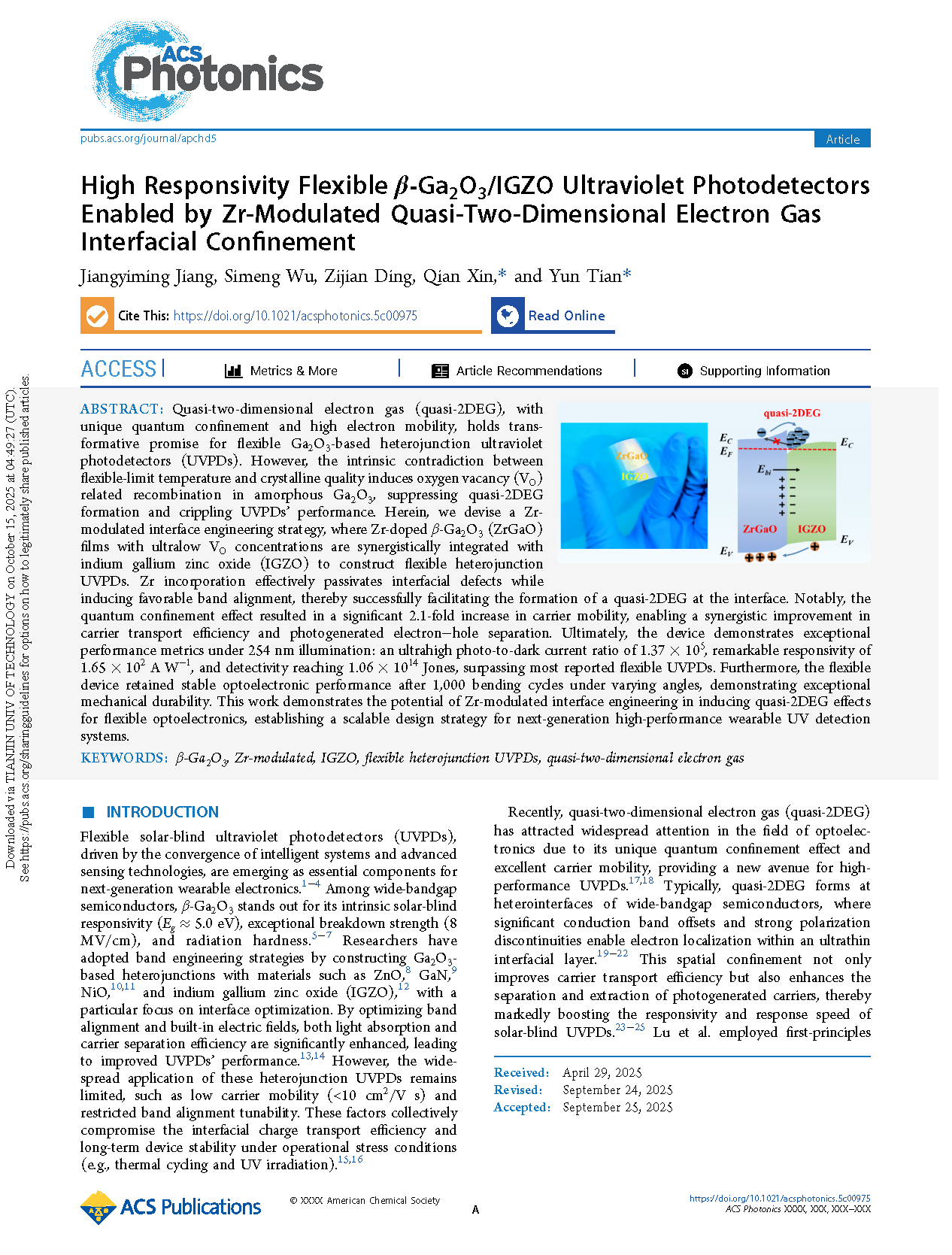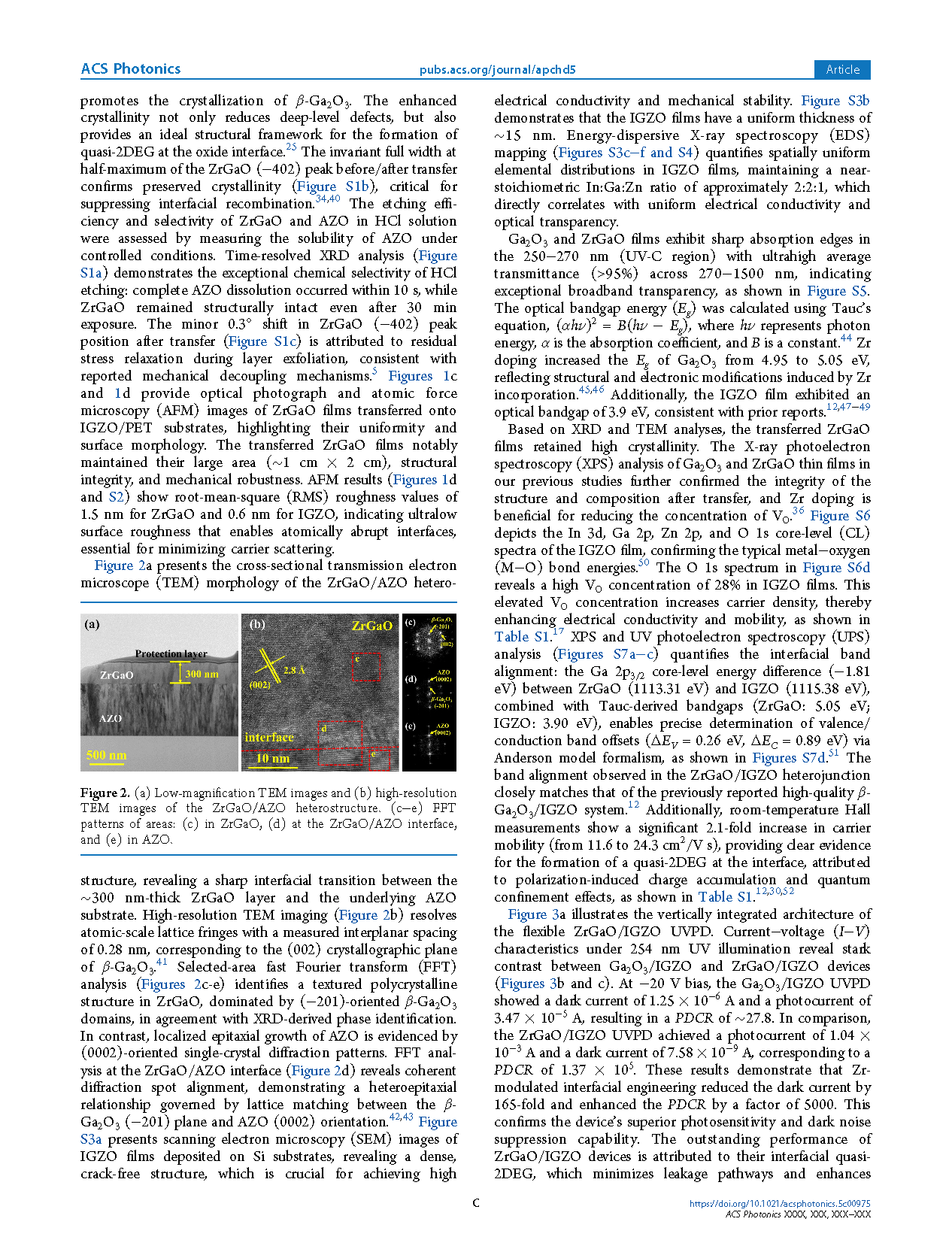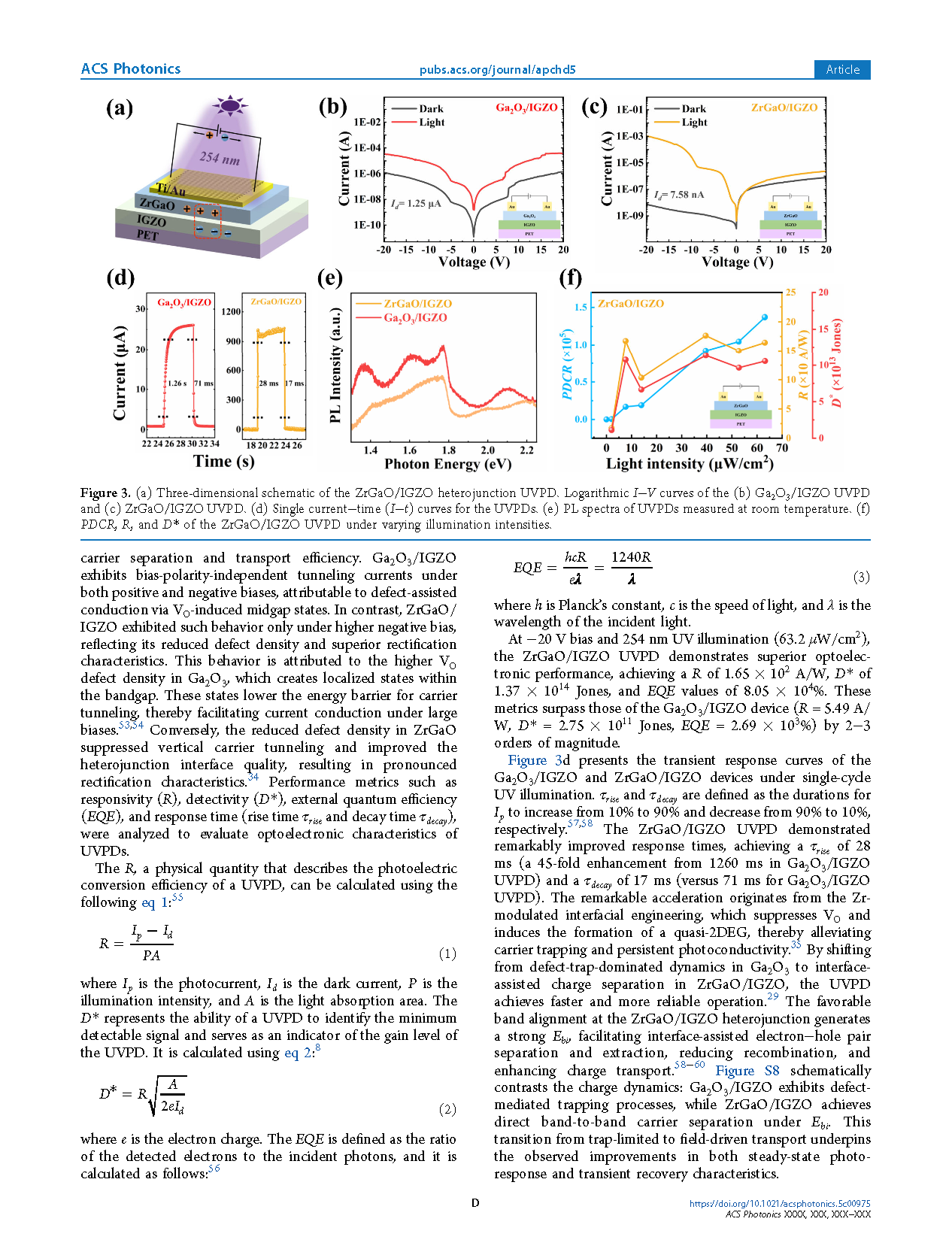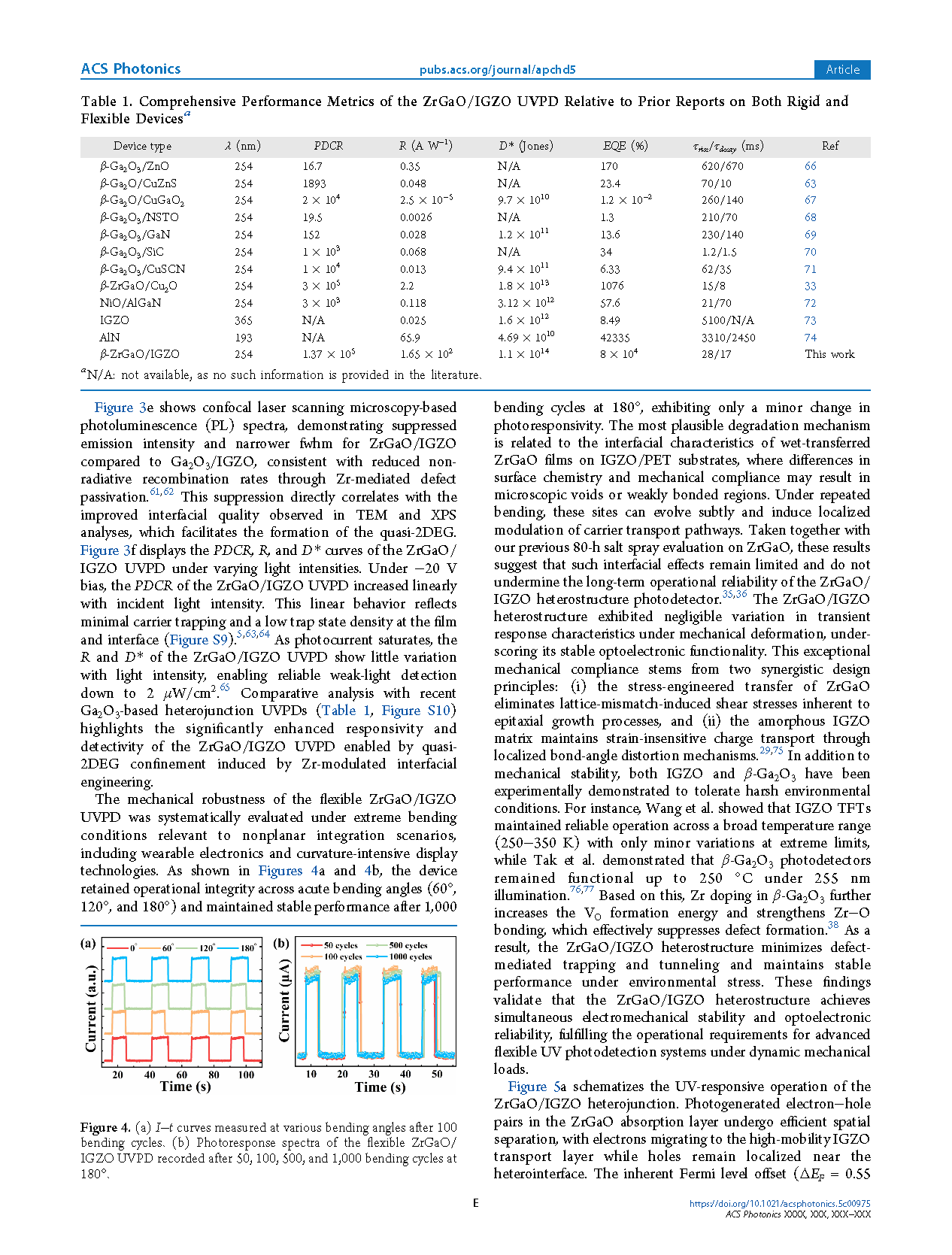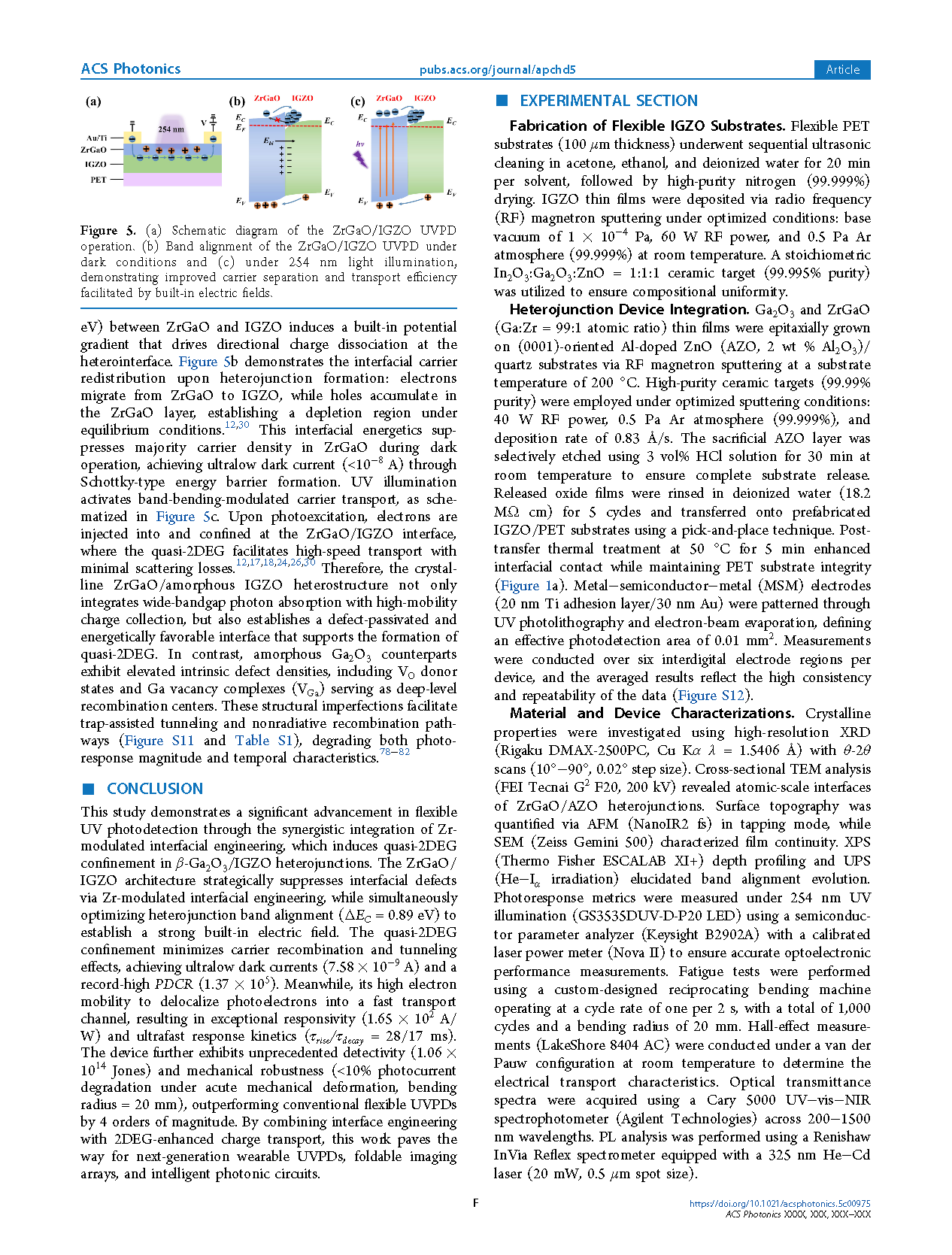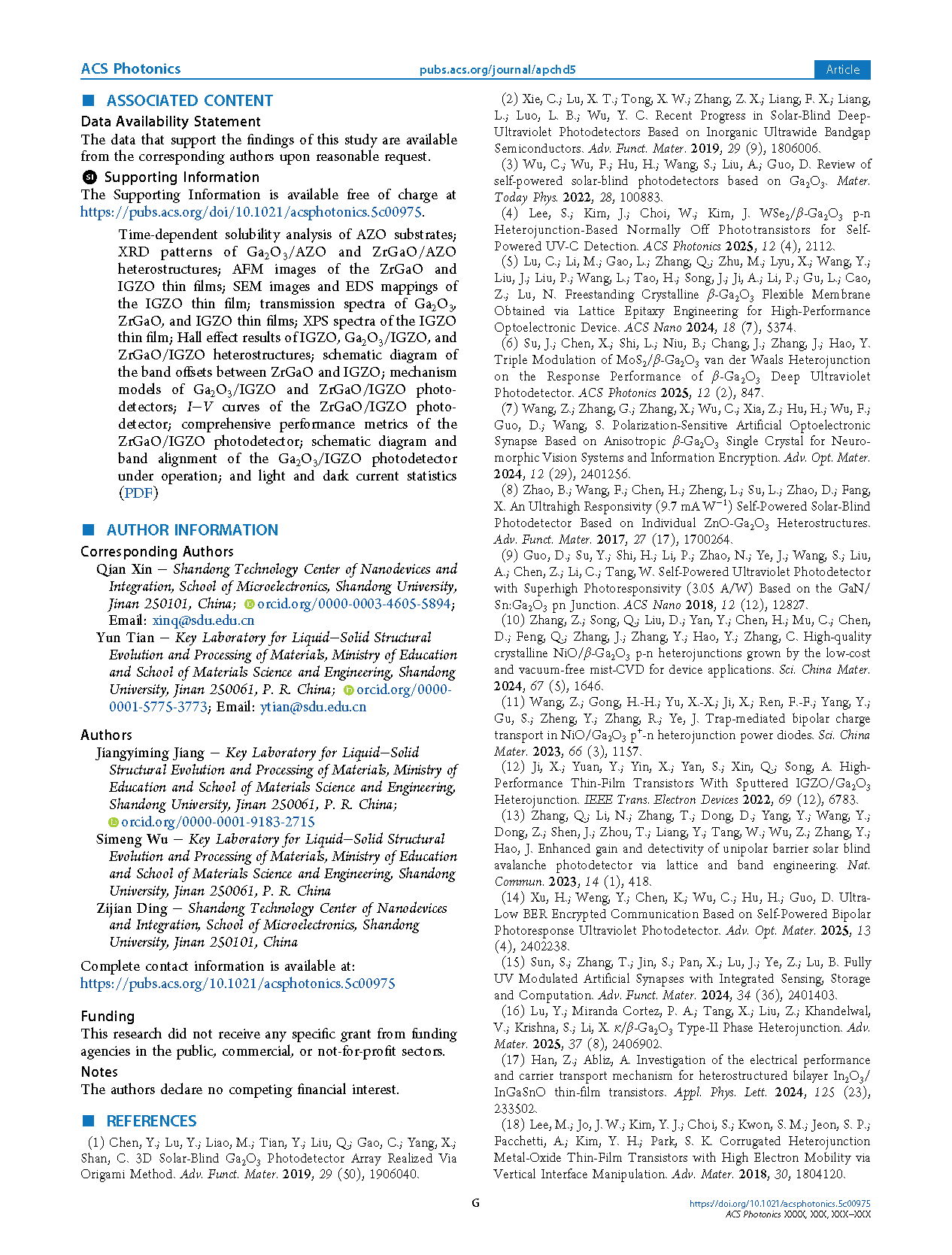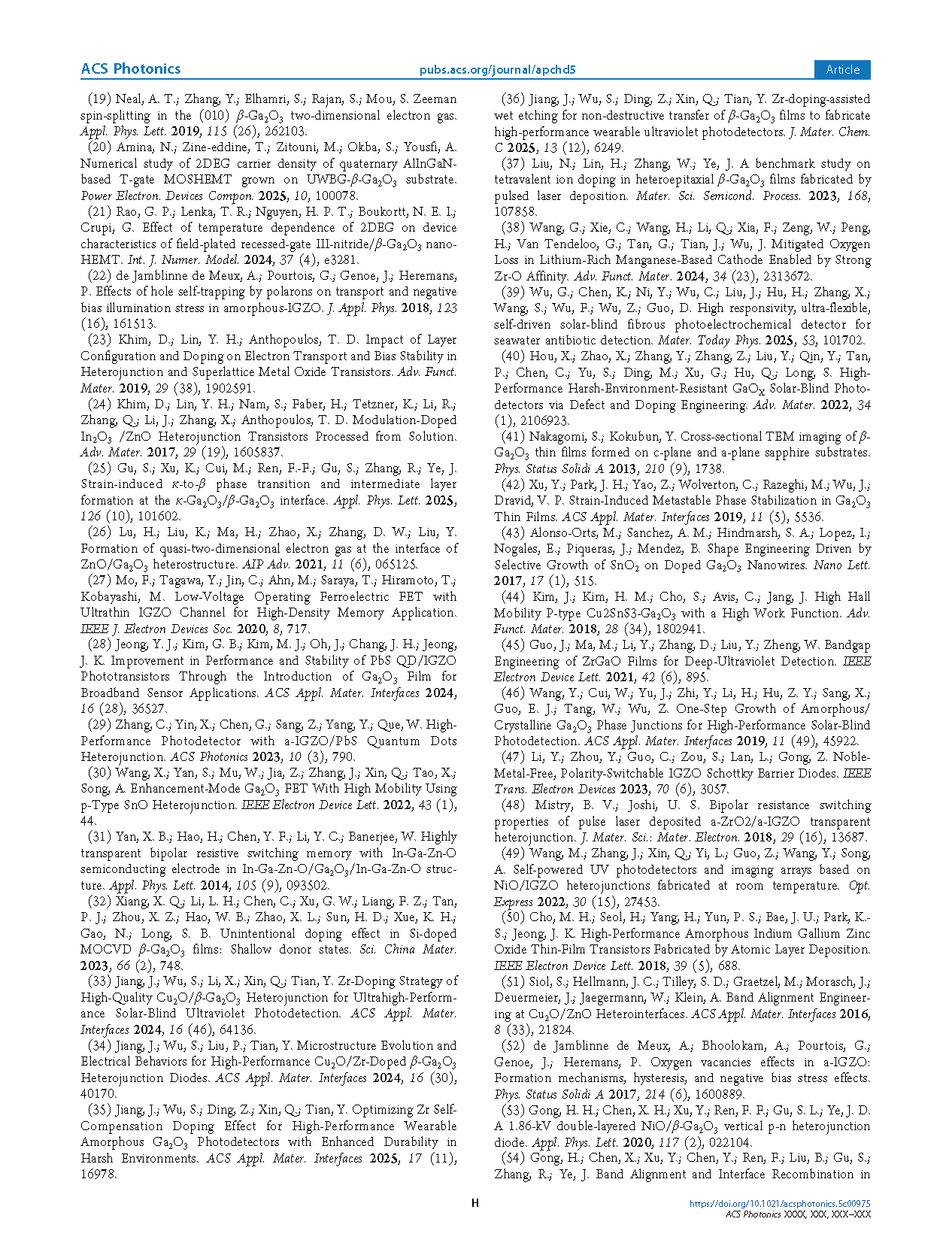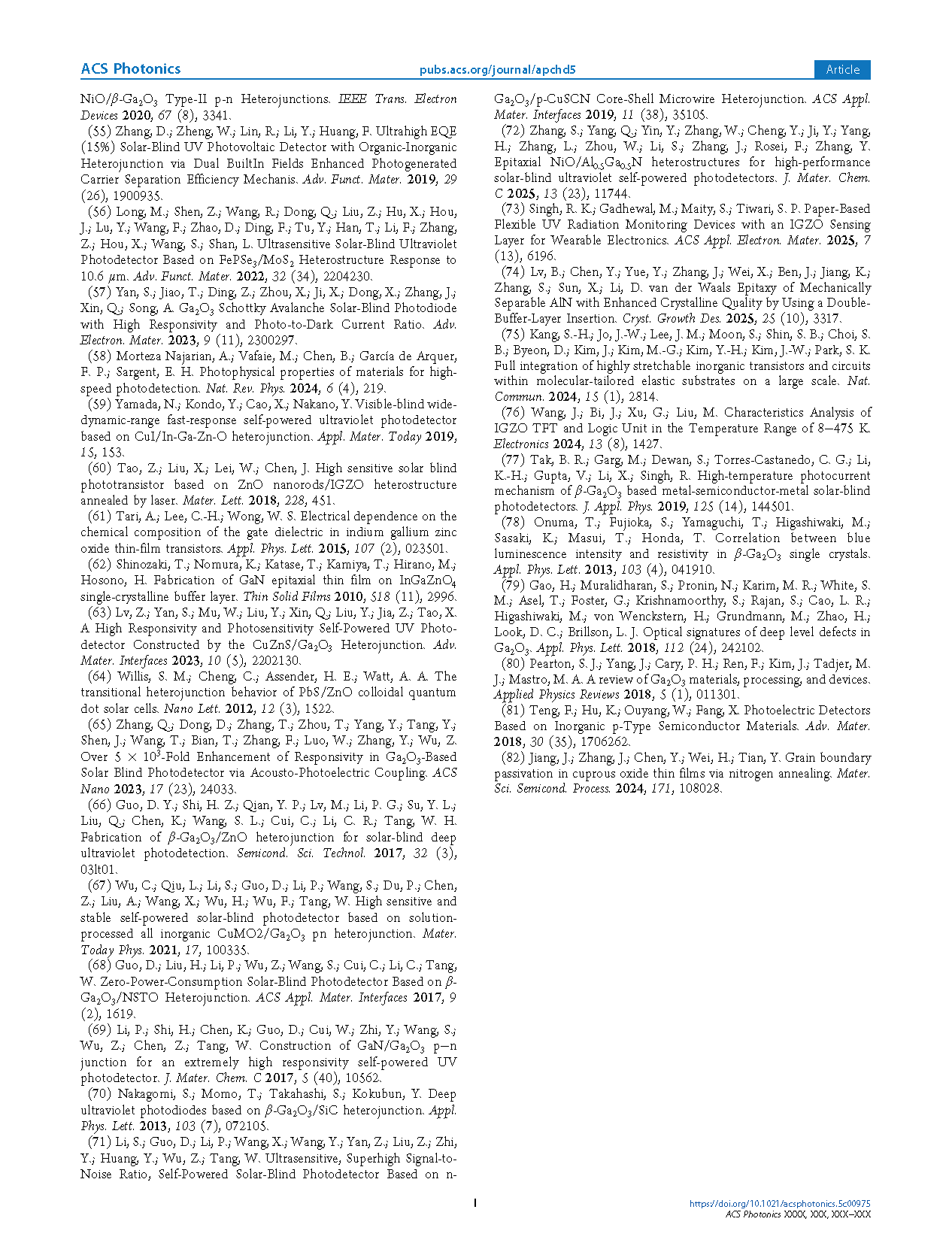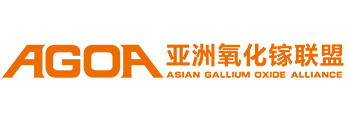

【Domestic Papers】High Responsivity Flexible β-Ga₂O₃/IGZO Ultraviolet Photodetectors Enabled by Zr-Modulated Quasi-Two-Dimensional Electron Gas Interfacial Confinement
日期:2025-10-30阅读:161
Researchers from the Shandong University have published a dissertation titled "High Responsivity Flexible β-Ga2O3/IGZO Ultraviolet Photodetectors Enabled by Zr-Modulated Quasi-Two-Dimensional Electron Gas Interfacial Confinement" in ACS Photonics.
Background
Flexible solar-blind ultraviolet photodetectors (UVPDs), driven by the convergence of intelligent systems and advanced sensing technologies, are emerging as essential components for next-generation wearable electronics. Among wide-bandgap semiconductors, β-Ga2O3 stands out for its intrinsic solar-blind responsivity (Eg ≈ 5.0 eV), exceptional breakdown strength (8 MV/cm), and radiation hardness. Researchers have adopted band engineering strategies by constructing Ga2O3- based heterojunctions with materials such as ZnO, GaN, NiO, and indium gallium zinc oxide (IGZO), with a particular focus on interface optimization. By optimizing band alignment and built-in electric fields, both light absorption and carrier separation efficiency are significantly enhanced, leading to improved UVPDs’ performance. However, the widespread application of these heterojunction UVPDs remains limited, such as low carrier mobility (<10 cm2/V s) and restricted band alignment tunability. These factors collectively compromise the interfacial charge transport efficiency and long-term device stability under operational stress conditions (e.g., thermal cycling and UV irradiation).
Abstract
Quasi-two-dimensional electron gas (quasi-2DEG), with unique quantum confinement and high electron mobility, holds transformative promise for flexible Ga2O3-based heterojunction ultraviolet photodetectors (UVPDs). However, the intrinsic contradiction between flexible-limit temperature and crystalline quality induces oxygen vacancy (VO) related recombination in amorphous Ga2O3, suppressing quasi-2DEG formation and crippling UVPDs’ performance. Herein, we devise a Zr-modulated interface engineering strategy, where Zr-doped β-Ga2O3 (ZrGaO) films with ultralow VO concentrations are synergistically integrated with indium gallium zinc oxide (IGZO) to construct flexible heterojunction UVPDs. Zr incorporation effectively passivates interfacial defects while inducing favorable band alignment, thereby successfully facilitating the formation of a quasi-2DEG at the interface. Notably, the quantum confinement effect resulted in a significant 2.1-fold increase in carrier mobility, enabling a synergistic improvement in carrier transport efficiency and photogenerated electron–hole separation. Ultimately, the device demonstrates exceptional performance metrics under 254 nm illumination: an ultrahigh photo-to-dark current ratio of 1.37 × 105, remarkable responsivity of 1.65 × 102 A W–1, and detectivity reaching 1.06 × 1014 Jones, surpassing most reported flexible UVPDs. Furthermore, the flexible device retained stable optoelectronic performance after 1,000 bending cycles under varying angles, demonstrating exceptional mechanical durability. This work demonstrates the potential of Zr-modulated interface engineering in inducing quasi-2DEG effects for flexible optoelectronics, establishing a scalable design strategy for next-generation high-performance wearable UV detection systems.
Conclusion
This study demonstrates a significant advancement in flexible UV photodetection through the synergistic integration of Zr-modulated interfacial engineering, which induces quasi-2DEG confinement in β-Ga2O3/IGZO heterojunctions. The ZrGaO/IGZO architecture strategically suppresses interfacial defects via Zr-modulated interfacial engineering, while simultaneously optimizing heterojunction band alignment (ΔEC = 0.89 eV) to establish a strong built-in electric field. The quasi-2DEG confinement minimizes carrier recombination and tunneling effects, achieving ultralow dark currents (7.58 × 10−9 A) and a record-high PDCR (1.37 × 105). Meanwhile, its high electron mobility to delocalize photoelectrons into a fast transport channel, resulting in exceptional responsivity (1.65 × 102 A/ W) and ultrafast response kinetics (τrise/τdecay = 28/17 ms). The device further exhibits unprecedented detectivity (1.06 × 1014 Jones) and mechanical robustness (<10% photocurrent degradation under acute mechanical deformation, bending radius = 20 mm), outperforming conventional flexible UVPDs by 4 orders of magnitude. By combining interface engineering with 2DEG-enhanced charge transport, this work paves the way for next-generation wearable UVPDs, foldable imaging arrays, and intelligent photonic circuits.
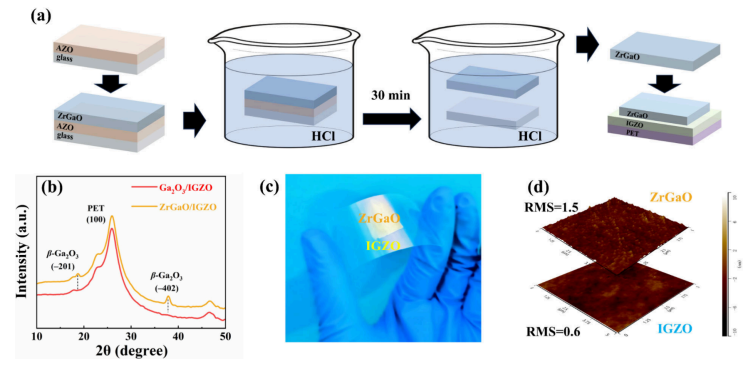
Figure 1. (a) Schematic representation of the ZrGaO film transfer process onto IGZO substrates. (b) XRD patterns of Ga2O3/IGZO and ZrGaO/ IGZO UVPDs. (c) Optical photograph and (d) corresponding AFM images of ZrGaO and IGZO. (Scanning range: 5 μm × 5 μm; height range: 0−10 nm.)

Figure 2. (a) Low-magnification TEM images and (b) high-resolution TEM images of the ZrGaO/AZO heterostructure. (c−e) FFT patterns of areas: (c) in ZrGaO, (d) at the ZrGaO/AZO interface, and (e) in AZO.

Figure 3. (a) Three-dimensional schematic of the ZrGaO/IGZO heterojunction UVPD. Logarithmic I−V curves of the (b) Ga2O3/IGZO UVPD and (c) ZrGaO/IGZO UVPD. (d) Single current−time (I−t) curves for the UVPDs. (e) PL spectra of UVPDs measured at room temperature. (f) PDCR, R, and D* of the ZrGaO/IGZO UVPD under varying illumination intensities.
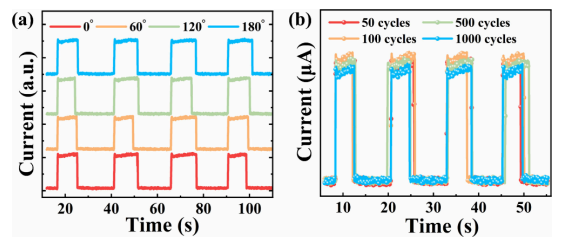
Figure 4. (a) I−t curves measured at various bending angles after 100 bending cycles. (b) Photoresponse spectra of the flexible ZrGaO/ IGZO UVPD recorded after 50, 100, 500, and 1,000 bending cycles at 180°.
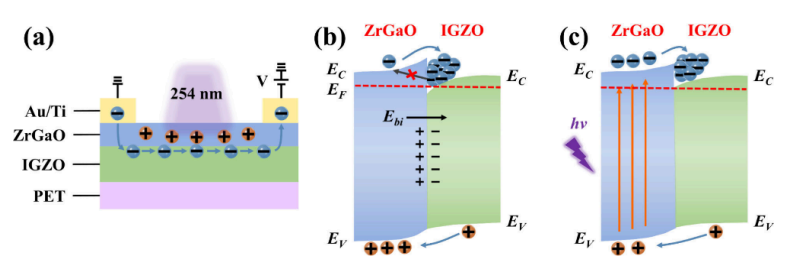
Figure 5. (a) Schematic diagram of the ZrGaO/IGZO UVPD operation. (b) Band alignment of the ZrGaO/IGZO UVPD under dark conditions and (c) under 254 nm light illumination, demonstrating improved carrier separation and transport efficiency facilitated by built-in electric fields.
DOI:
doi.org/10.1021/acsphotonics.5c00975
